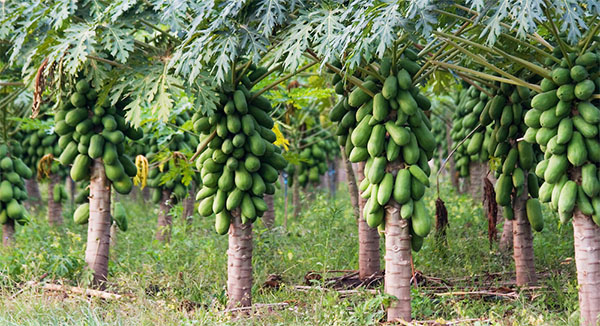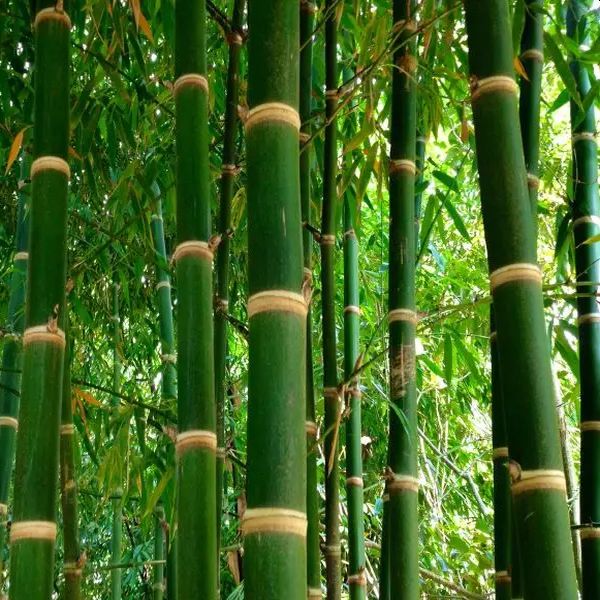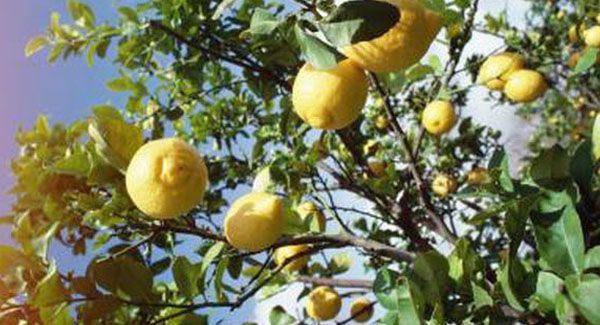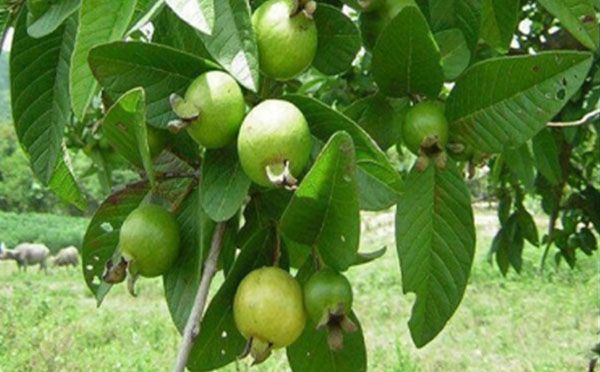Horticulture Project
Leading Wholesaler of Papaya, Natural Bamboo, Thai Lemon, Guava and Amla from Bangalore.
| Business Type | Supplier |
| Click Here to View Catalogue |
PAPAYA
Grown as per tissue culture procedures, Seeding Papaya Plant is offered by us to our valued customers. In the process, we procure plant tissue from a healthy mother plant and expose it to a specified regimen of nutrients, hormones, and light under sterile conditions. This methodology ensures healthier plantlets that are characterized by optimum growth rate. (Ssp group)
VARIETY : MadhuBindu Papaya
USES
Papayas contain an enzyme called papain that aids digestion; in fact, it can be used as a meat tenderizer. Papaya is also high in fiber and water content, both of which help to prevent constipation and promote regularity and a healthy digestive tract
Papaya consuming the antioxidant beta-carotene, found in papayas, may reduce cancer risk.
CULTIVATION
- Papaya is basically a tropical plant however is also grows well in sub- tropical parts.
- Those feet hills which taken a mild winter are ideal for papaya cultivation low temperature and frost limit. Cultivation in higher altitudes. It can be a grown from the sea level to an altitude of 100 meters but above an altitude of 600 meters.
- Popularly known as 'MadhuBindu' and is cultivated for table as well as processing purpose. The variety bears greenish-yellow oblong-shaped fruits with orange thick flesh and good flavor. The variety can be maintained pure by growing in isolation. Due to its excellent fruit quality it fetches good market value.
SPECIES
Papaya grows well on many types of soil, but they must be adequately drained. Restricted soil drainage promotes root diseases. Most commercial production in Hawaii is on porous as lava. Production on other soil types is limited to low rainfall areas where restricted drainage is less likely to cause problems. Heavy clay and pahoehoe lava soils should be avoided. Soil pH near neutral (pH 6.0 to 7.0) is preferred.
MARKETING
India is world’s largest producer of this fruit. The largest Papaya producing states include Andhra Pradesh, Gujarat, Karnataka, West Bengal, and Madhya Pradesh & Maharashtra. Three notable varieties of Papaya in India include Pusa Delicious, Pusa Dwarf and Pusa Nanha. . Our company also provides the facility of Buy Back agreement.
HARVESTING
Papaya plants tend to over bear. Fruits are so crowded that they do not get proper space for development. Fruit thinning should be done to get well sized fruits. Proper size is attained in 10 months of flowering. Near ripening fruits change colour from green to yellowish green. Fruits should be harvested at maturity.
SERVICES & INFORMATIONS
- Papaya growing first harvesting practical training.
- First production starts in 10th – 18th month. (one time production)
- Plantation cost is to be borne only once.
- This includes Supervision, consultancy, guidance, Transportation cost first year.
- Buy back Agreement of Papaya. (Ssp group)
TERMS AND CONDITIONS OF COMPANY
- For 1 Acre plantation the cost of plant is Rs. 1,44,500 /-, out of which 50% i.e. Rs. 72,250/- has to be paid before the cultivation and the remaining half after the planting is done.
- The Buy Back Agreement Stamp paper of Rs.100/- has to be stamped by District Court of your area.
- For 10 Acre or more yield the buy Back Agreement Stamp Paper will be of Rs.500/-
| Business Type | Supplier |
| Click Here to View Catalogue | |
| Color | Green |
| Type | Natural |
| Shape | Round |
| Size | Standard |
| Usage | Construction |
| Surface | Polished |
“Bamboo Cultivating Task Report, Cost and Benefit" The bamboo is an evergreen blossoming plant having a place with the grass Investigation. family. They are considered as the quickest developing plants on the planet. It is seen that a few types of bamboo can develop to right around 90 cm in a day. The plant is of affordable significance in districts of South Asia, Southeast Asia and East Asia. The bamboo I s characterized by the geographic division where it existed like the new world herbaceous, tropical woody and mild woody. It is trusted that there are in excess of 1400 types of bamboo from one side of the planet to the other. This plant is local to warm jungle al and calm climatic zones, however once in a while certain types of bamboo are additionally found to fill in cool rocky areas. Bamboo plants have regular recovery limit and are for the most part found in the woodland regions. The bamboo plant helps in safeguarding for forests by delivering 35% more oxygen and lessening the carbon dioxide in the climate.
Bamboo plants have two distinct development examples like clustering and running. The bunching assortment spreads gradually during the development time frame, though the running assortment ha s forceful development conduct. The normal stature of the bamboo could be assessed around 4.5 to 12 m. However, it is a blossoming plant, the recurrence of blooming is distinctive every one of the animal varieties. Additionally the timespan is very enormous and could go from 65 to 120 years. It is seen that once the bamboo plant begins blooming then it gradually decays and bites the dust.
| Business Type | Supplier |
THAI LEMON (SEEDLESS LEMON) CULTIVATION PROJECT
Lemon is cultivated in all parts of the country for the simple reason that it grows even in temperate lands. It does not penetrate its root too deep. Lemon is a perishable commodity and it has been used by the people in their day to day activities in cooking, bathing and preparing medicines. In India, Lemon is an important plantation crop. It is grown in an area of 18.39 lakh hectares, mainly in the four southern states of Kerala, Tamil Nadu, Andhra Pradesh and Karnataka. In Kerala and parts of interior Karnataka and Tamil Nadu.
USES
The Seedless Lemons are much sought after by pickle manufacturing industries. It is also used for making pies and tarts, as a flavoring for cakes, cookies, cake icings, puddings, sherbet, confectionery, preserves and pharmaceutical products. A few drops of lemon juice, added to cream before whipping, gives stability to the whipped cream.
CULTIVATION
In India Andhra Pradesh, Maharashtra, Rajasthan, Madhya Pradesh & Gujarat the prime areas of Lemon cultivation in Gujarat.
Temperature - Land: Uniform Cold & Hot weather are most suited to Lemon crop. In Heavy rainfall areas infestation of pest disease increases. All areas are suitable for Lemon cultivation.
SPECIES
This is seedless variety. This Lemon tree gives fruits throughout the year. Production Capacity of this variety is better than others. This Variety has longest shelf life.
MARKETING
Seedless lemon demand is immense therefore marketing it is not difficult. Lemon is brought by many people in market. Our company also provides the facility of Buy Back agreement.
HARVESTING
Within first year of cultivation, seedless lemon can be harvested
SERVICES
- Thai Lemon growing first harvesting practical training.
- First production starts in 12 month. Then second production starts in 2 year 12 month.
- Plantation cost is to be borne only once
- This includes Supervision, consultancy, guidance, Transportation cost first year.
- Buy back Agreement of Lemon. (Ssp group)
TERMS AND CONDITIONS OF COMPANY
- For 1 Acre plantation the cost of plant is Rs.64,120/-, out of which 50% i.e. Rs 32,060/- has to be paid before the cultivation and the remaining half after the planting is done.
- The Buy Back Agreement Stamp paper of Rs.100/- has to be stamped by District Court of your area. (Ssp group)
- For 10 Acre or more yield the buy Back Agreement Stamp Paper will be of Rs.500/-.
| Business Type | Supplier |
| Usage | Cooking |
GUAVA
Guava (Psidium guajava) is valued for its delectable taste and aromas a cheap nutritious fruit with a wide adaptability to diverse climatic and soil conditions, guava is an ideal crop to grow in developing countries The guava tree can easily be recognizable for its smooth, thin, brown bark that flakes off, exposing a greenish layer underneath. Guava is used to produce jams, jellies, and juices commercially. Guava may be eaten raw or cooked. Guavas are an excellent source of vitamin C and also contain iron calcium, and phosphorus. (ssp group)
VAREITY: Guava L49
USES
Guava is good source of vitamins and minerals. This fruit is an excellent source of vitamin ‘C’, ‘A’ and antioxidants which helps in boosting immune system.Guava fruit is good source of “potassium”. Guava fruit is low in calories and fat. (Ssp group)
Guava is rich source of soluble dietary fiber and hence helps in treating Constipation. Consuming Guava fruit regularly lowers the risk of cancer. Guava fruits are good for Diabetic patients.
CULTIVATION
The fruit vary in size depending upon the fruit load on a tree. The fruit shape usually round some time with short neck pyriform (Pear shaped strain) smooth surface. There are pink dots scattered over the whole fruit, (Chittidar). Pulp is soft and melting, white, taste sweet. (Ssp group)
SPECIES
Guava L49 which is usually propagated from seed can also be propagated vegetative. The plants can be raised through cuttings, layering or mound layering.
MARKETING
Guava demand is immense in India therefore selling is not difficult. Guava is bought by many people in market. Our company also provides the facility of Buy Back agreement. (Ssp group)
HARVESTING
Guava fruit is climacteric in nature. It can be picked when mature, light green in colour and firm. It ripens during transport on reaching the market and gives excellent colour and taste. The contractors usually harvest the fruit when ripe or nearly ripe for direct sale to the consumers. Few leaves or small branches if kept with the fruits make the fruit attractive and trees get light pruning. For distant marketing this practice should be discouraged. (Ssp group)
SERVICES
- Guava growing first harvesting practical training.
- First production starts in 3rd year.
- Plantation cost is to be borne only once.
- This includes Supervision, consultancy, guidance, Transportation cost first year.
- Buy back of Agreement of Guava. (Ssp group)
TERMS AND CONDITIONS OF COMPANY
- For 1 Acre plantation the cost of plant is Rs. 22,875 /-, out of which 50% i.e. Rs 11,437 /- has to be paid before the cultivation and the remaining half after the planting is done.
- The Buy Back Agreement Stamp paper of Rs.100/- has to be stamped by District Court of your area. (Ssp group)
- For 10 Acre or more yield the buy Back Agreement Stamp Paper will be of Rs.500/-.
| Business Type | Supplier |
| Application | Murabba, Cooking |
INTRODUCTION
Amla farming is a long life low maintains farming. Amla farming is a well done mostly in India. Amla Farming good profitable in dry area. Embelica Officinal is commonly known as Amla or Indian Gooseberry or Nelly is an important crop in India with high medical value. The fruit have the richest source of vitamin C (700 mg per 100 g of fruits) and is consider being good liver tonic, also used in form Amla powder.(ssp group)
VARIETY: AMLA NA-7
USES
Amla is the greatest boon to the humanity and one of the effective traditional herbal medicines, which had been used to treat and manage diseases since the ancient times. Hardly any people are unaware about its importance and significance as it is associated with multiple health and medicinal benefits. Amla is better in taste but the ayurvedic marvel can be used in many forms such as eaten raw, juice, chutneys, pickles, Murabbas, and used with other recipes using its powder. Amla power and oil are used traditionally in Ayurvedic applications for the treatment of scalp. Amla power improves immunity and gives physical strength. It improves complexion and removes wrinkles. (ssp group)
CULTIVATION
Amla is generally propagated by shield budding. Budding is done on one year old seedlings with buds collected from superior varieties yielding big sized fruits. Older trees or poor yielders can be changed into superior types by top working. The pits of 1 m3 are to be dug during May-June at a distance of 20x15 ft spacing and should be left for 15-20 days exposing to sunlight. Each pit should be filled With surface soil mixed with 15 kg farm yard manure and 0.5 kg of phosphorus before planting the budded seedling.
Young plants require watering during summer months at 15 days interval till they are fully established. Watering of bearing plants is advised during summer months at bi-weekly interval. After the monsoon rains, during October - December about 25-30 litres of water per day per tree through drip irrigation should be given.
SPECIES
Aloebarbadensis is the most common specie of Aloevera and grown in Rajasthan, M.P, U.P and Gujarat.
MARKETING
Amla demand is immense in India therefore selling is not difficult and also Our Company provides the facility of Buy Back agreement. (ssp group)
HARVESTING
The tree is small to medium in size, reaching 1–8 m (3 ft 3 in–26 ft 3 in) in height. The branch lets are not glabrous or finely pubescent, 10–20 cm (3.9–7.9 in) long, usually deciduous; the leaves are simple, sub sessile and closely set along branch lets, light green, resembling pinnate leaves. Amla production starts in fourth year. The fruits are harvested during February when they become dull greenish yellow from light green. The mature fruits are hard and they do not fall at gentle touch and therefore vigorous shaking is required. Fruits can also be harvested using long bamboo poles attached with hooks. (ssp group)
SERVICES & INFORMATIONS:
- Amla growing first harvesting practical training..
- First production starts in 4th year.
- Plantation cost is to be borne only once.
- This includes Supervision, consultancy, guidance, Transportation cost first year.
- Buy back of Agreement of Amla.
TERMS AND CONDITIONS OF COMPANY
- For 1 Acre plantation the cost of plant is Rs.52, 000/-, out of which 50% i.e. Rs26, 000/- has to be paid before the cultivation and the remaining half after the planting is done.
- The Buy Back Agreement Stamp paper of Rs.100/- has to be stamped by District Court of your area. (Ssp group)
- For 10 Acre or more yield the buy Back Agreement Stamp Paper will be of Rs.500/-.






